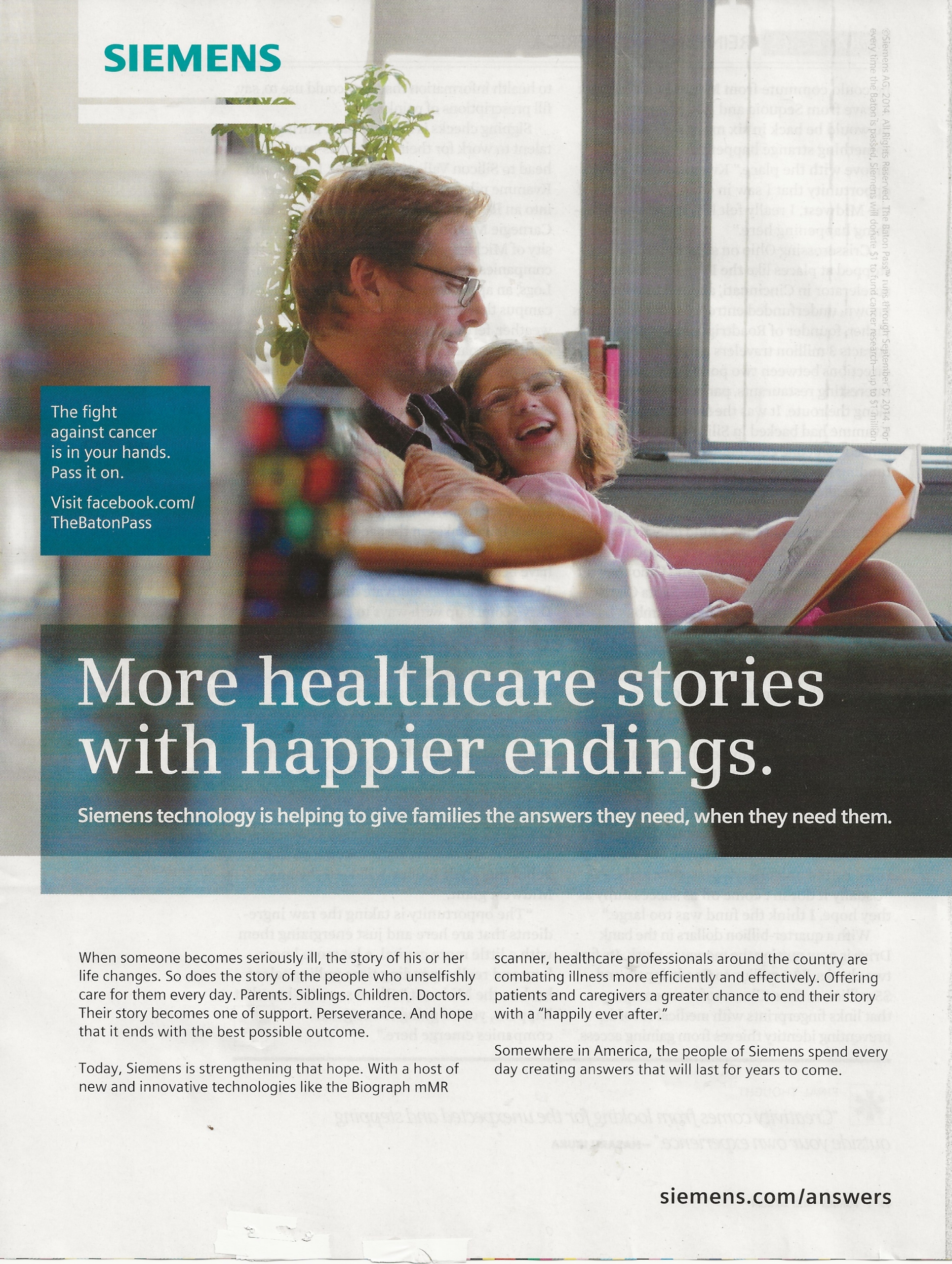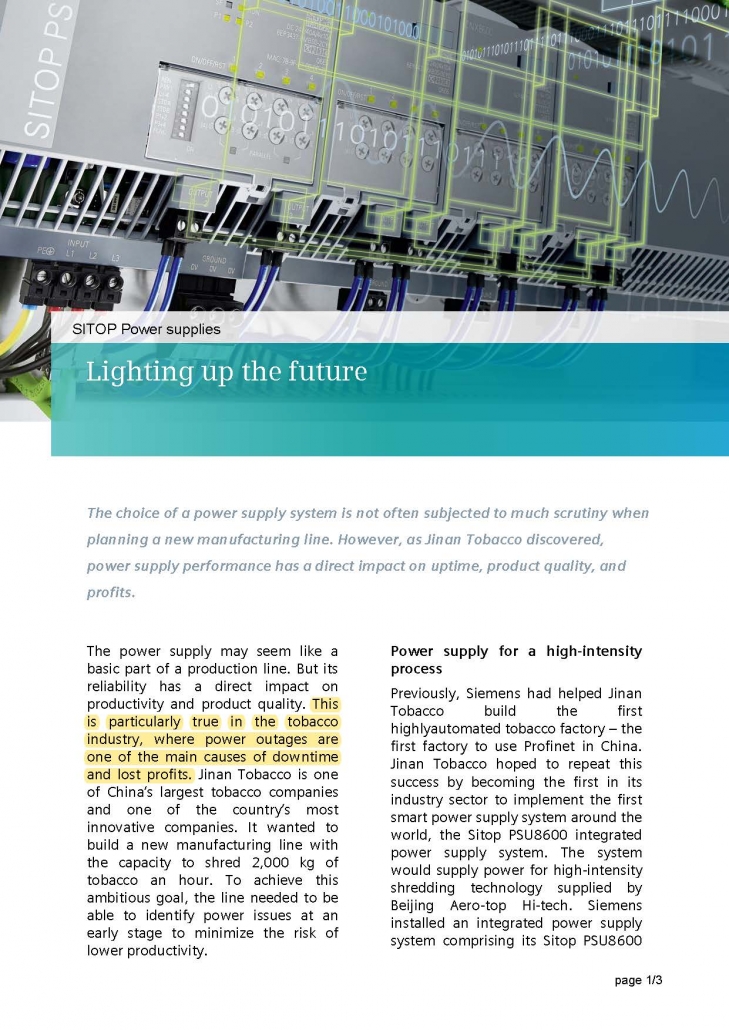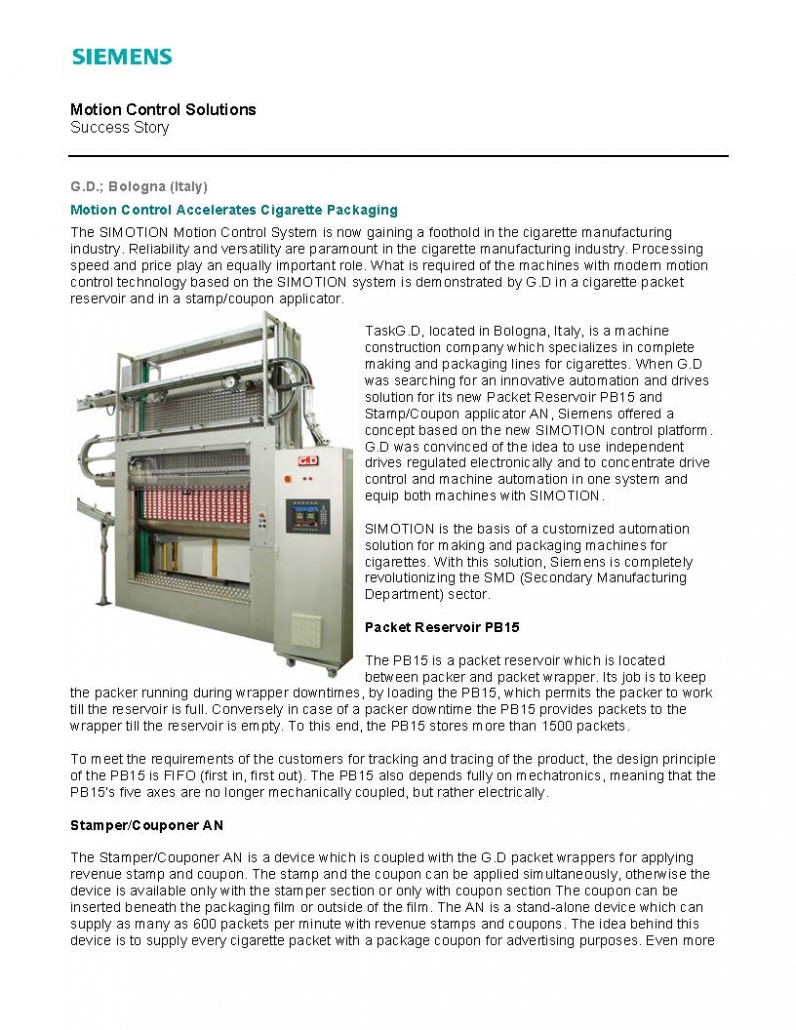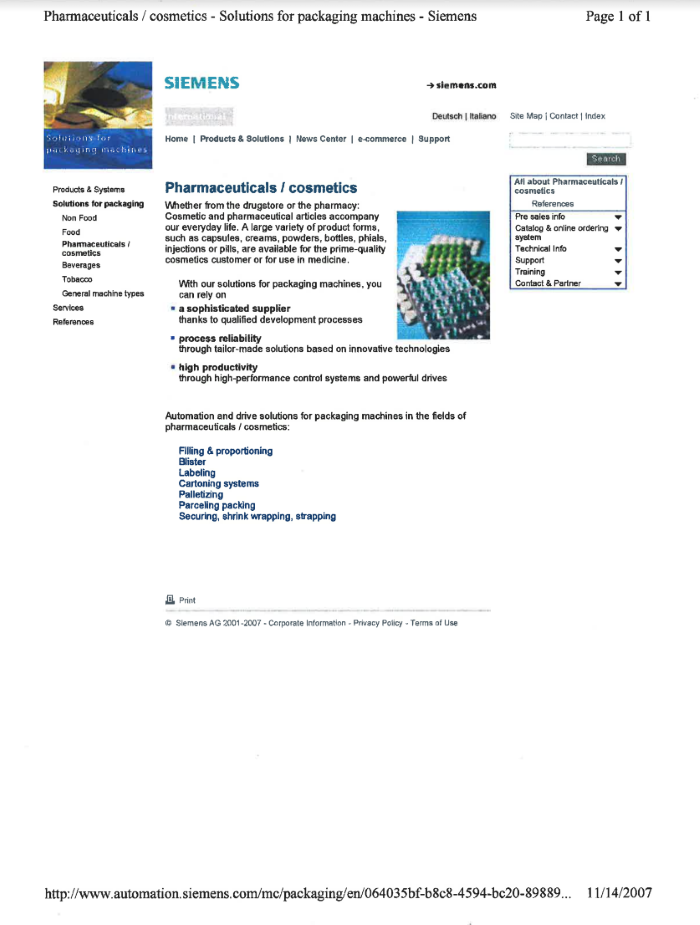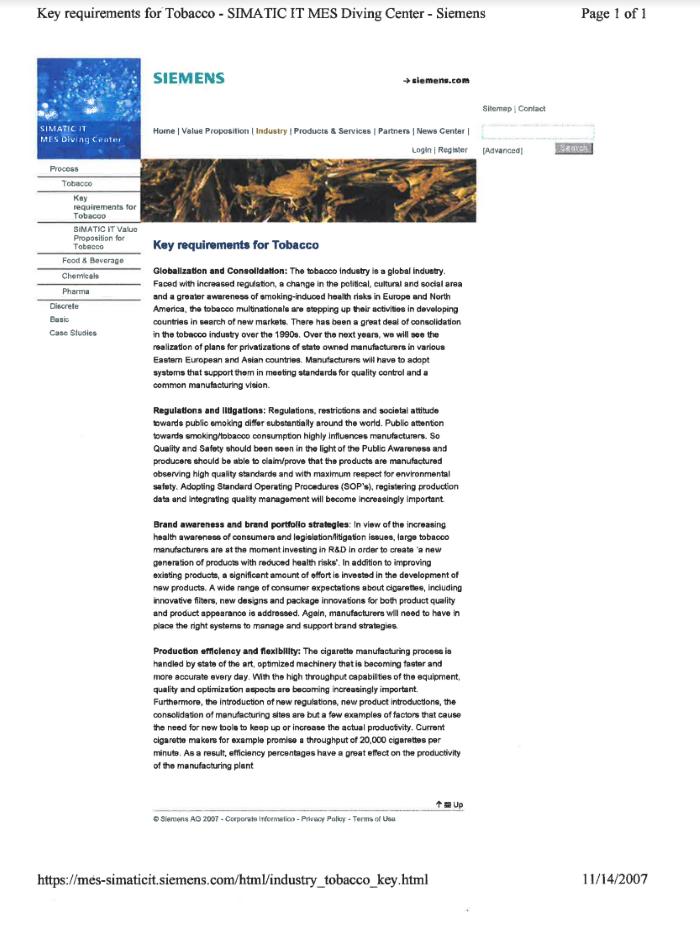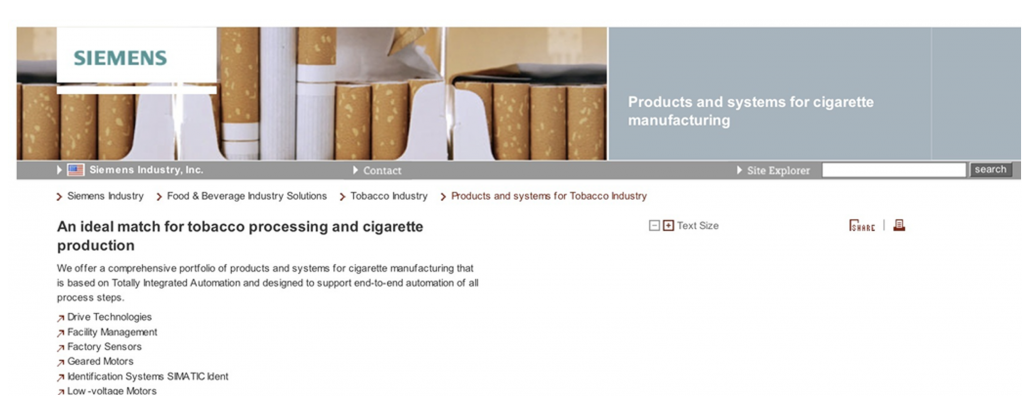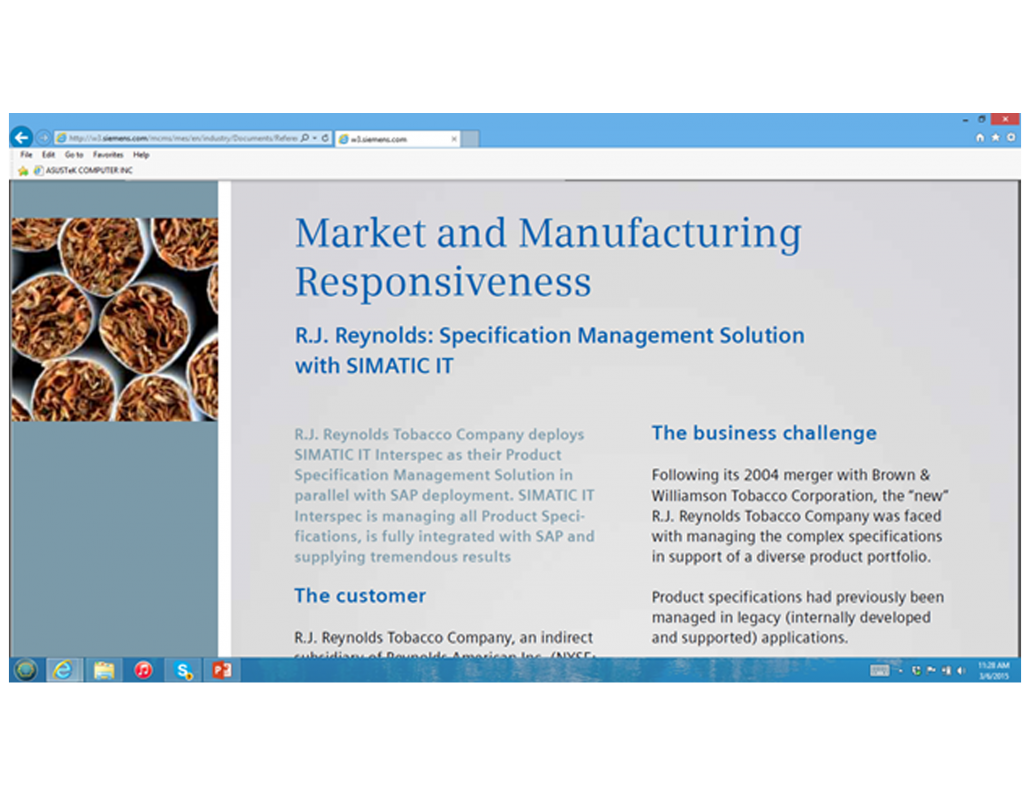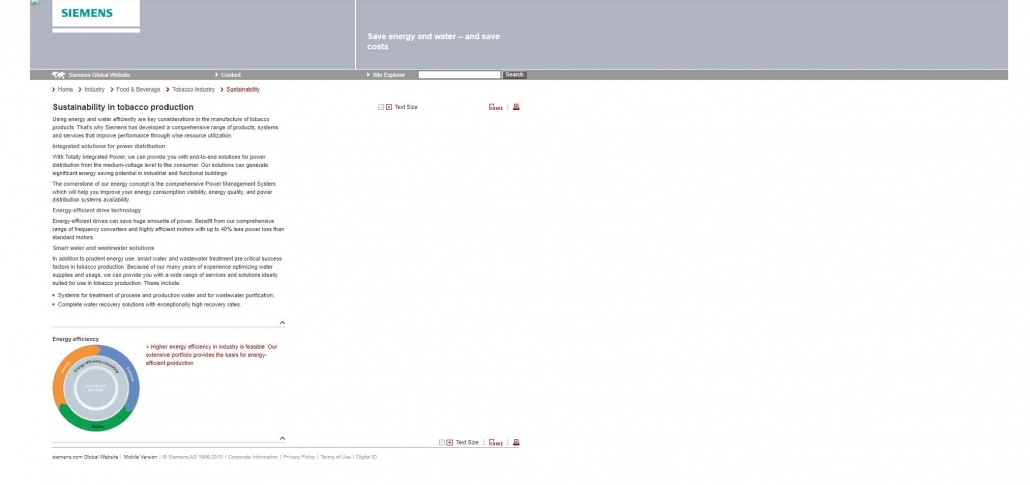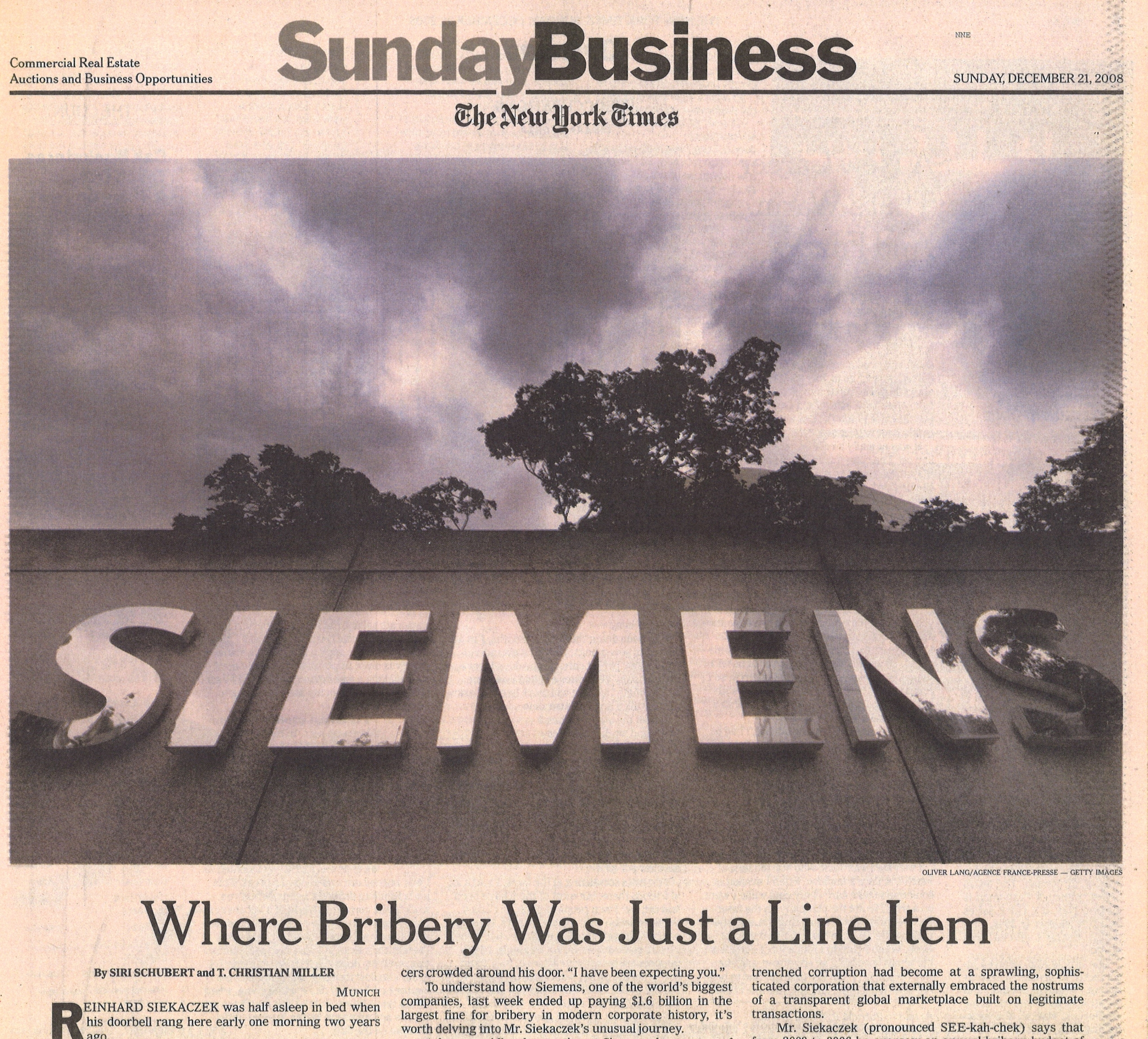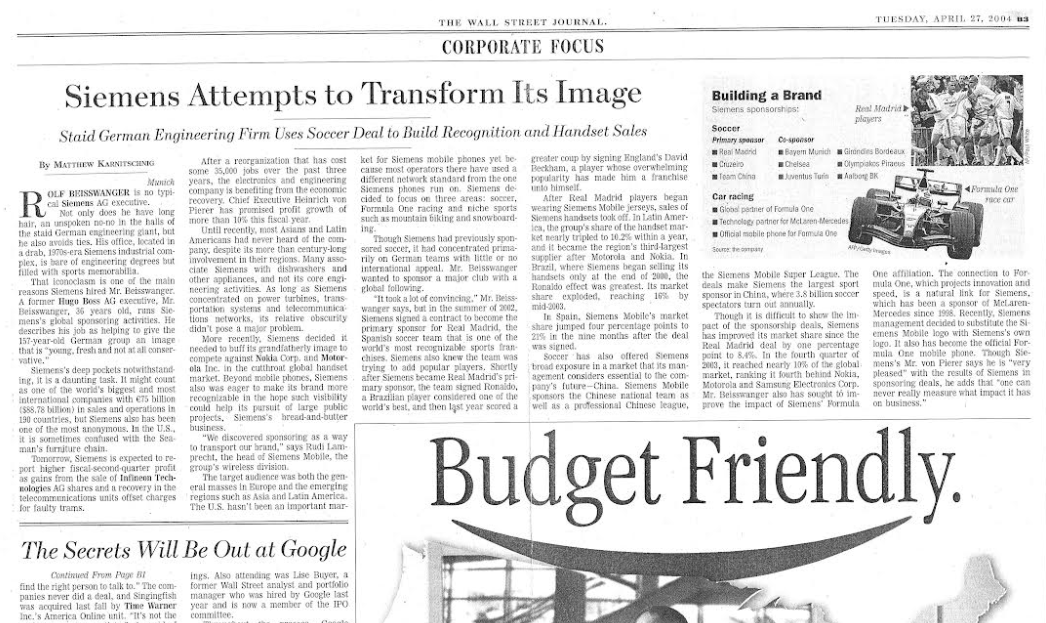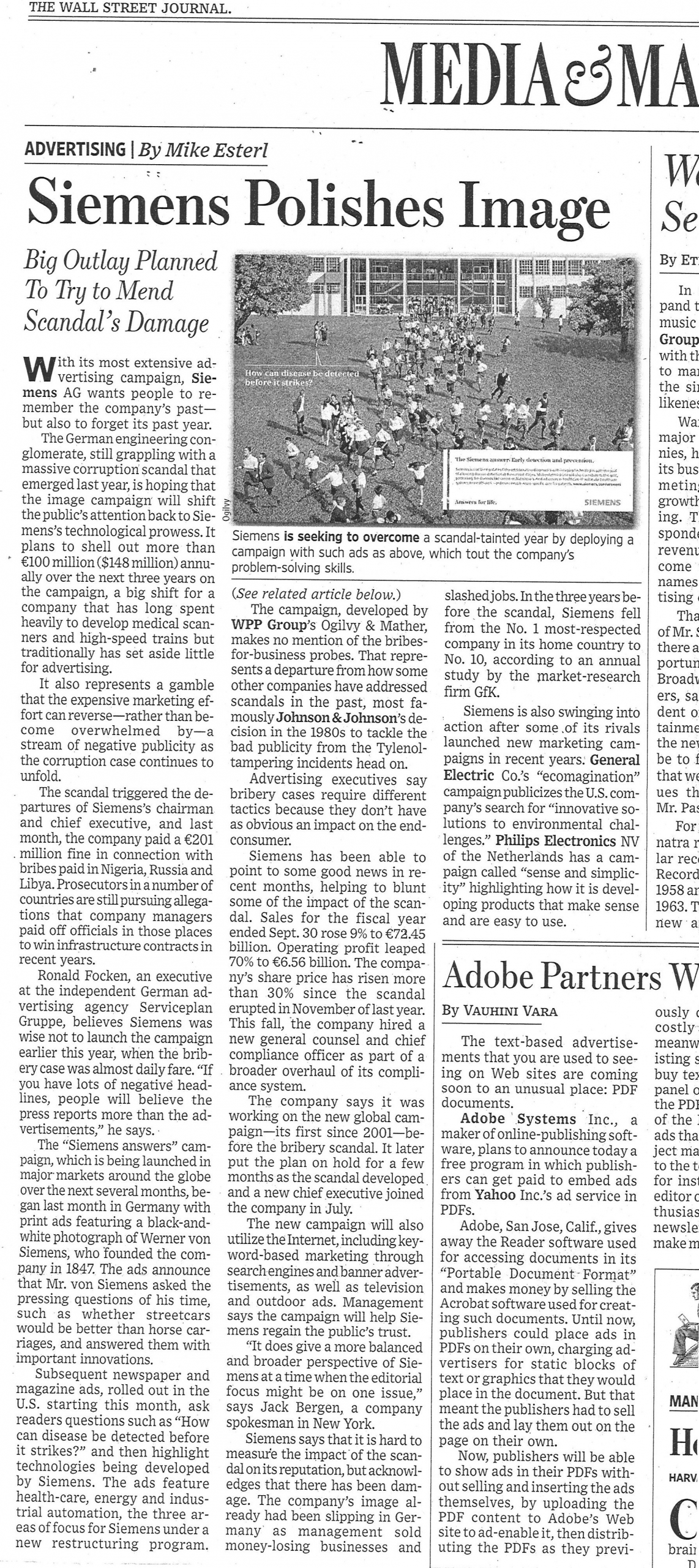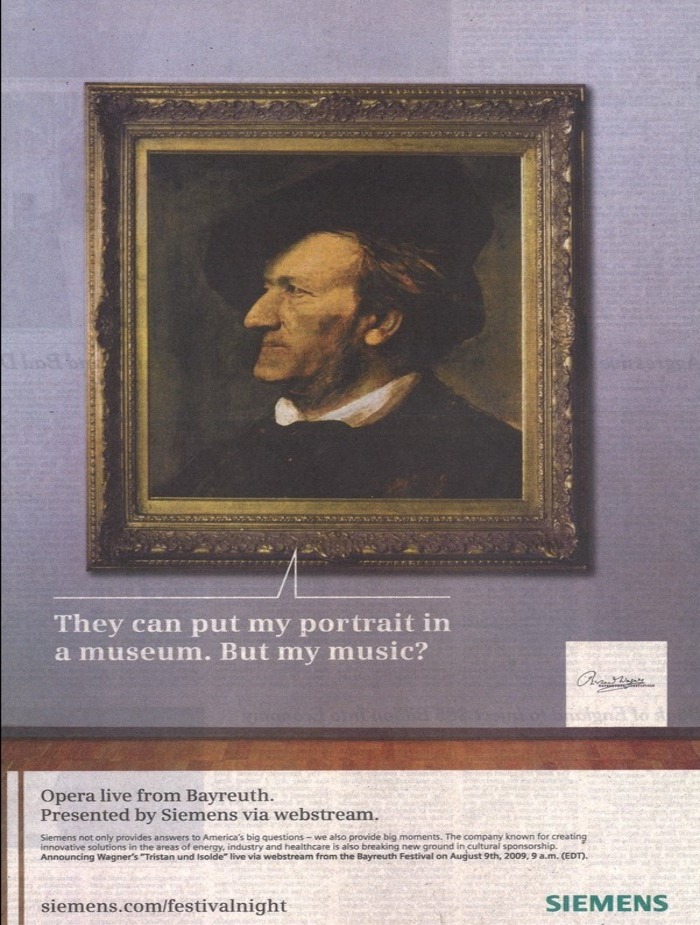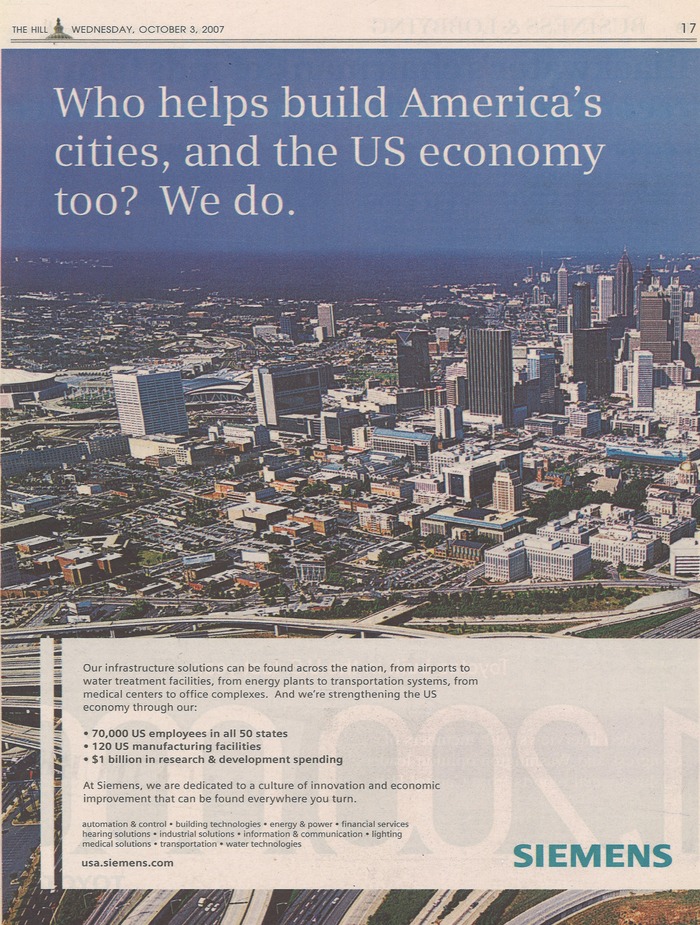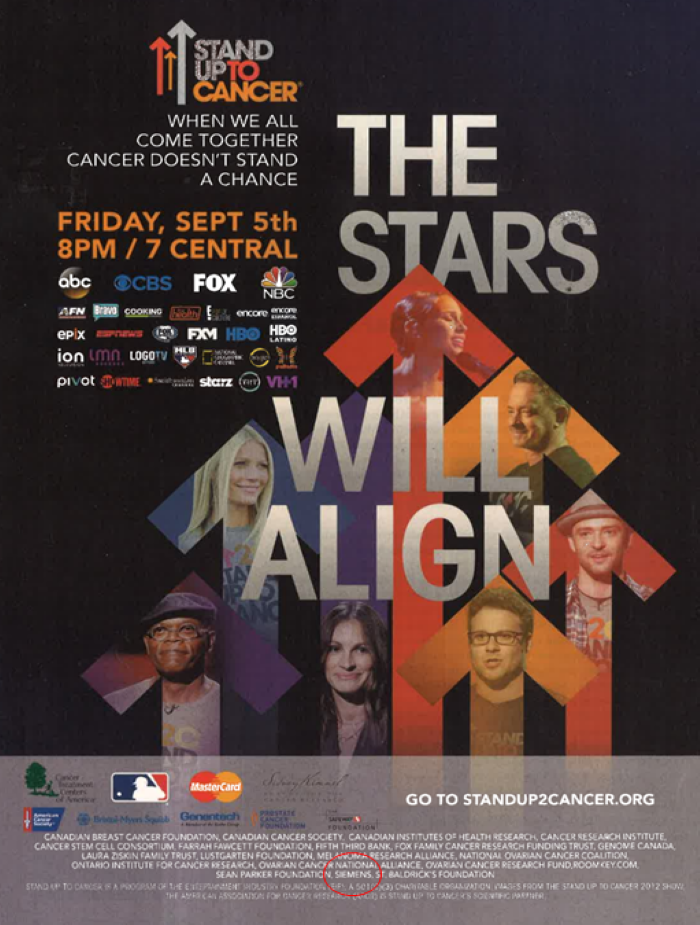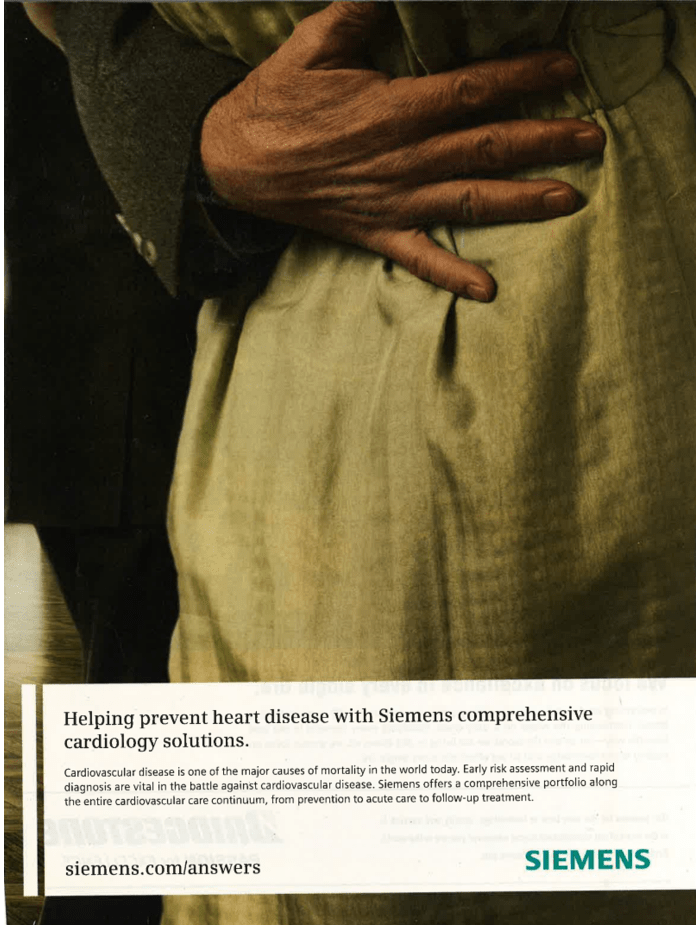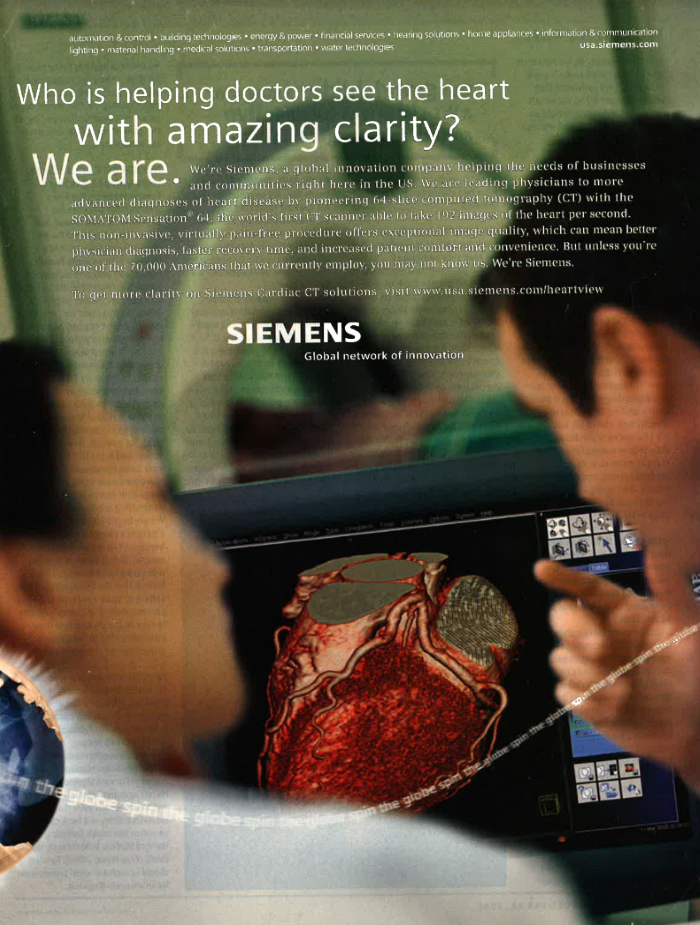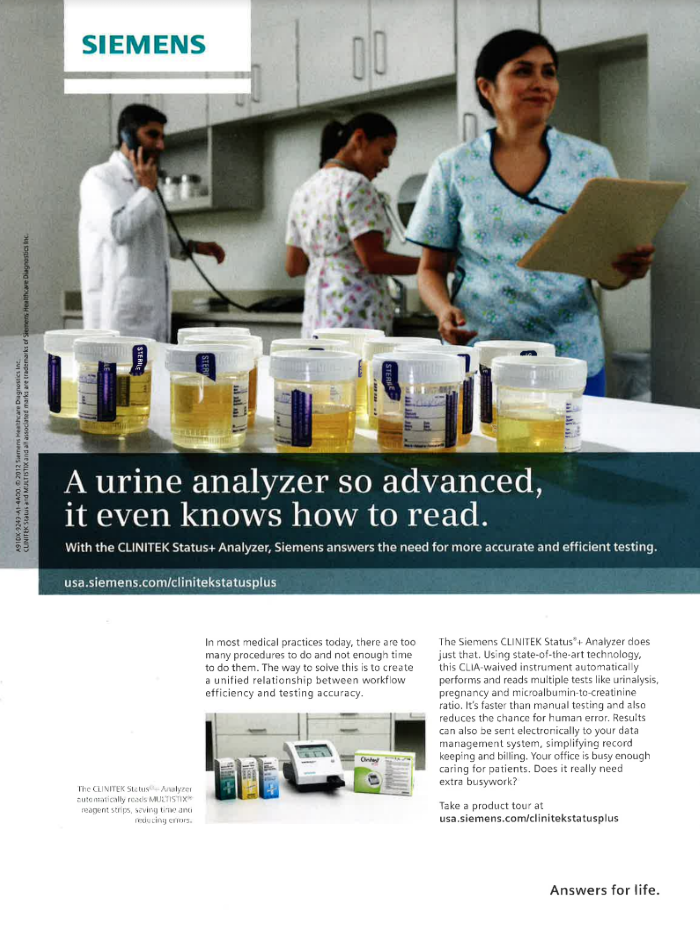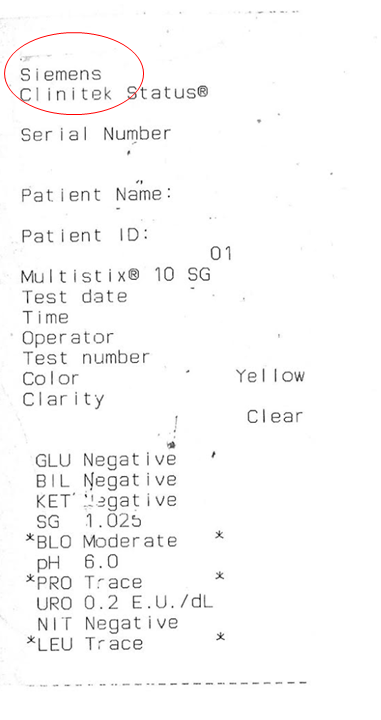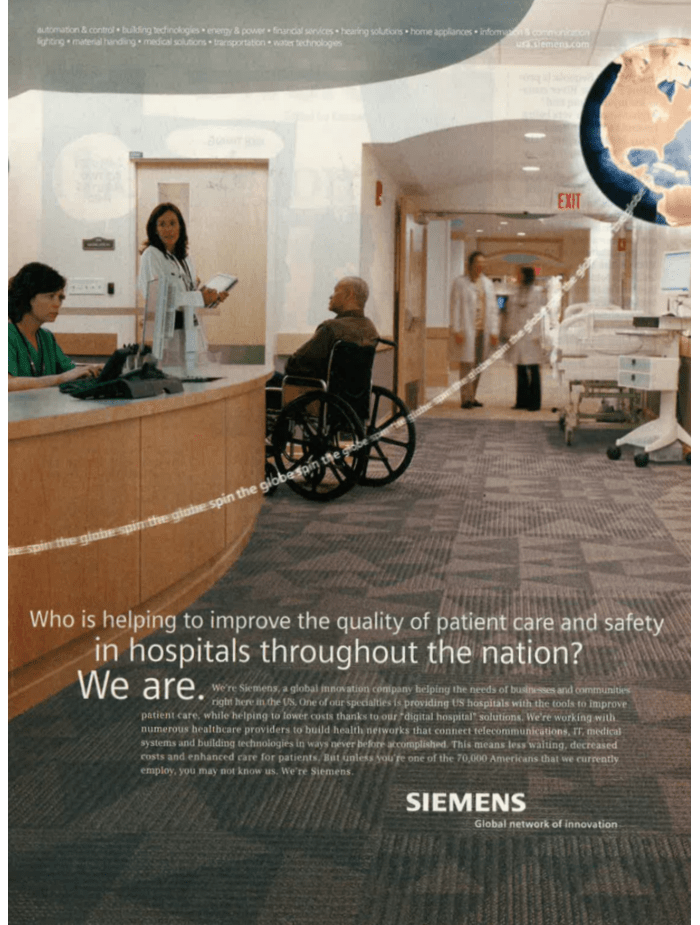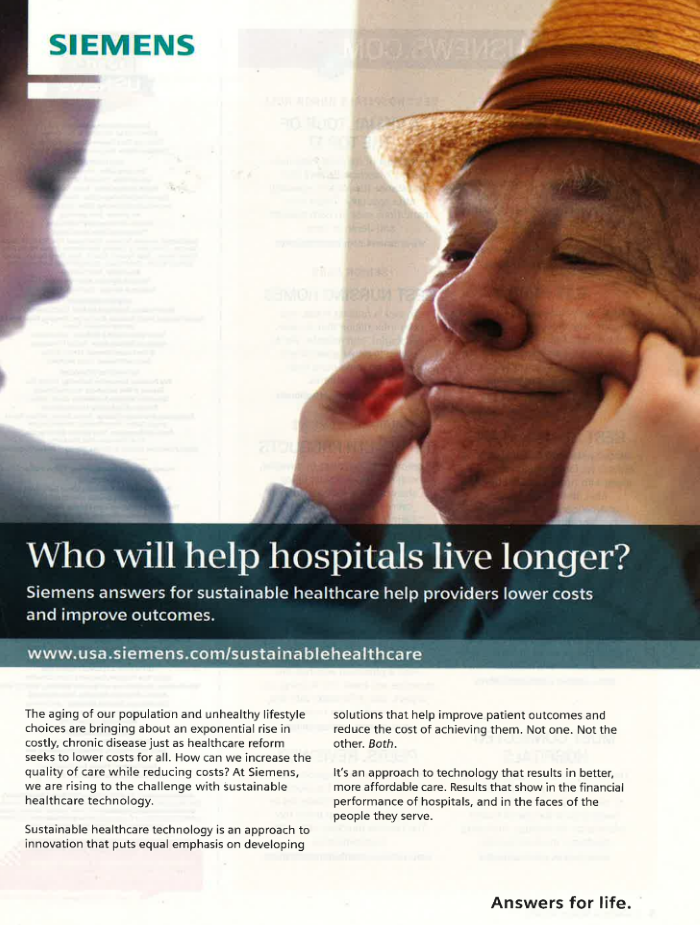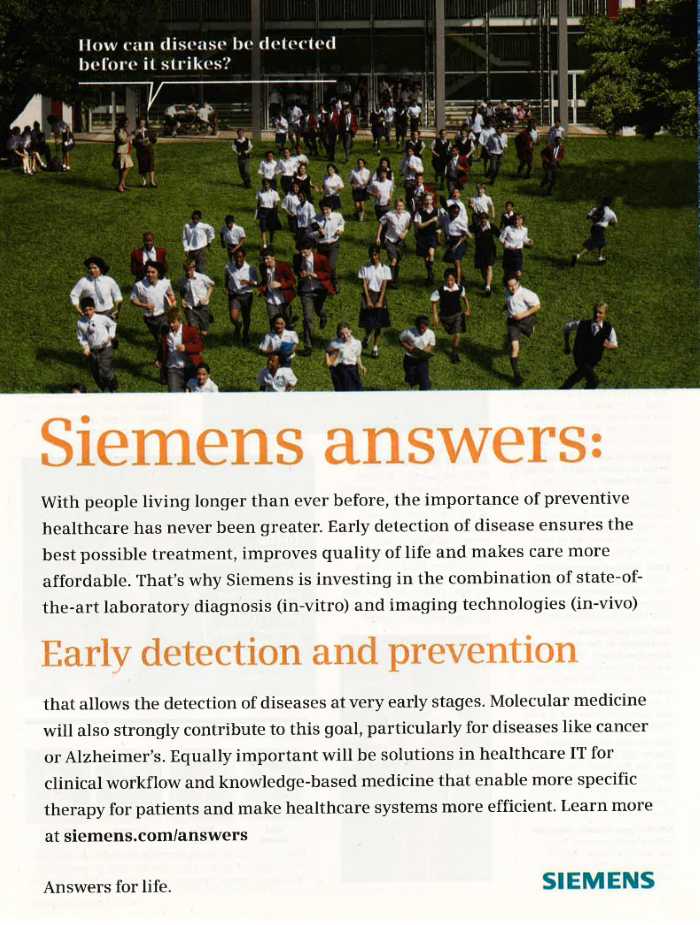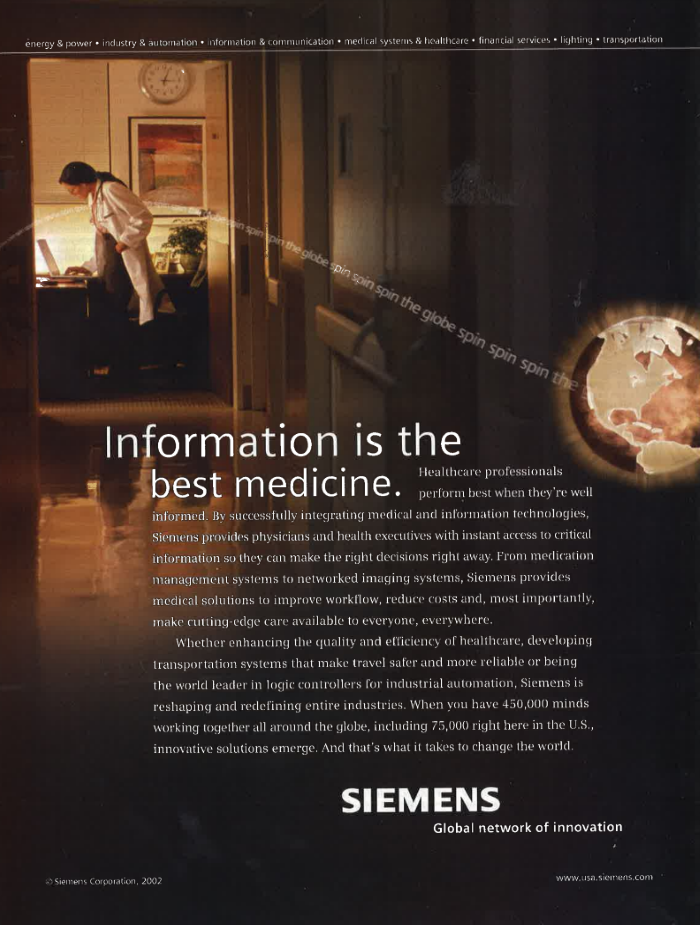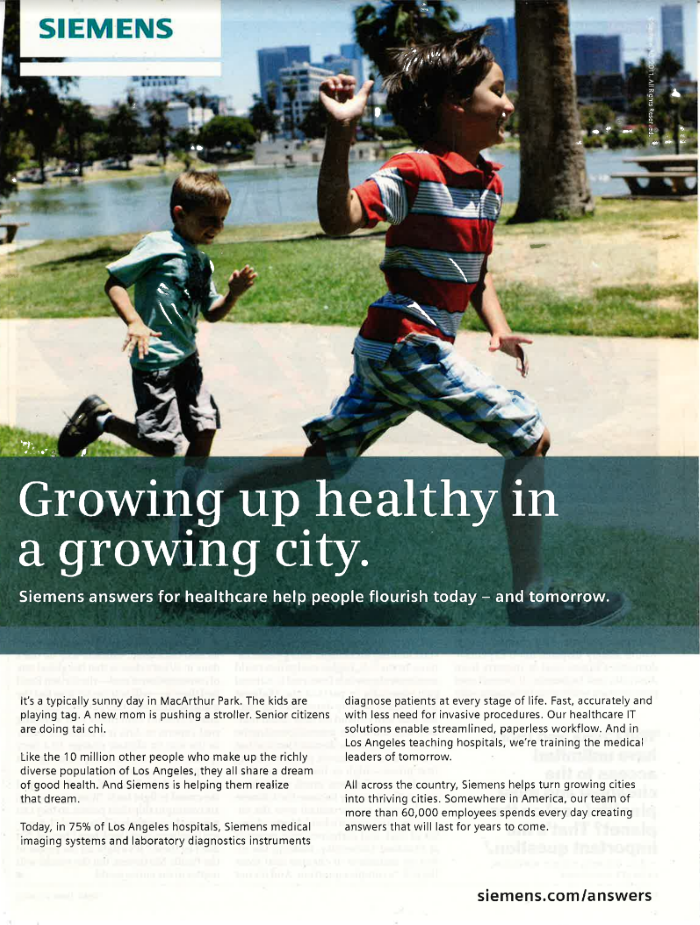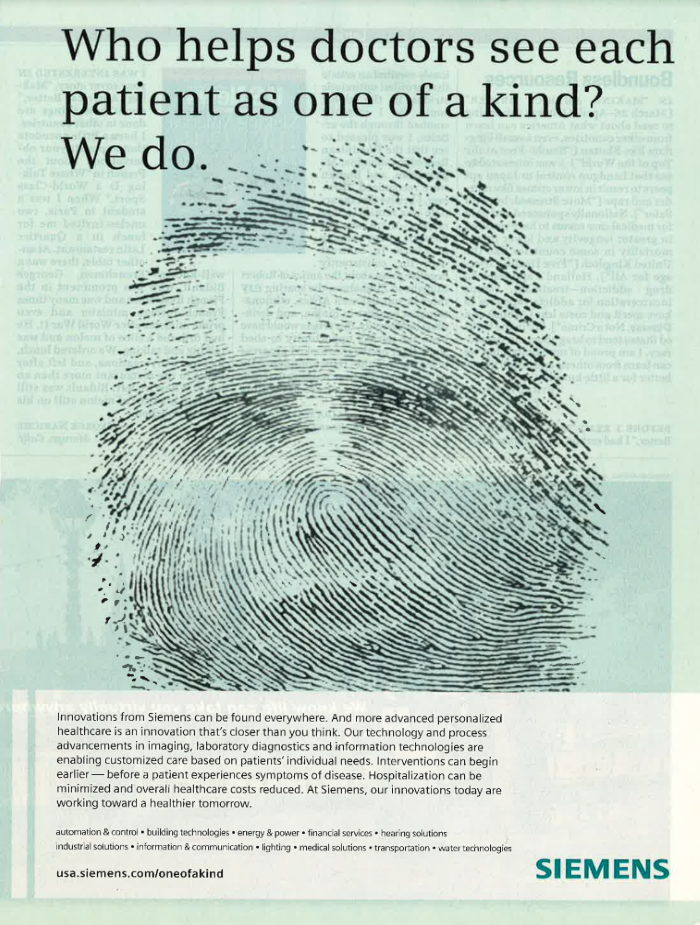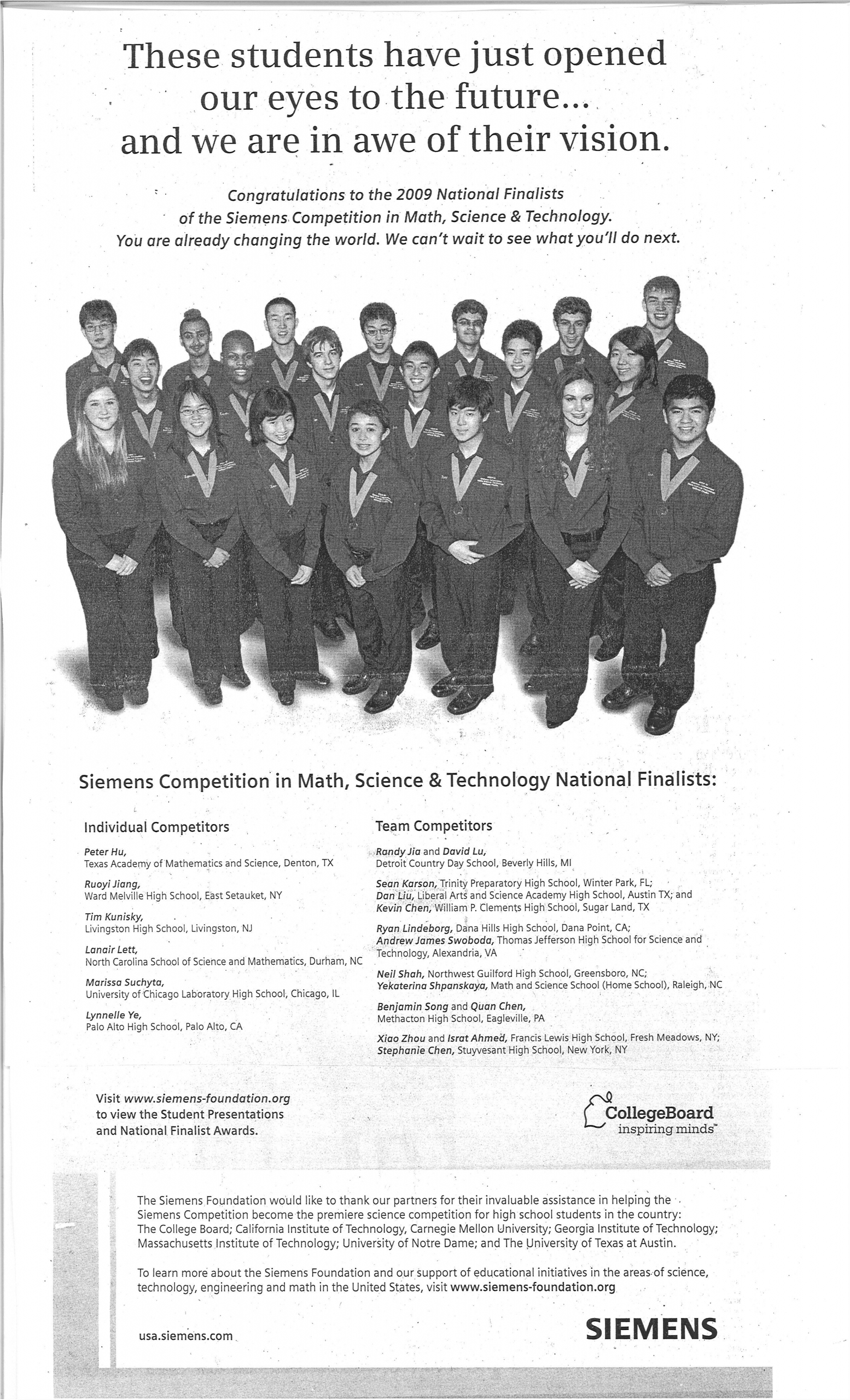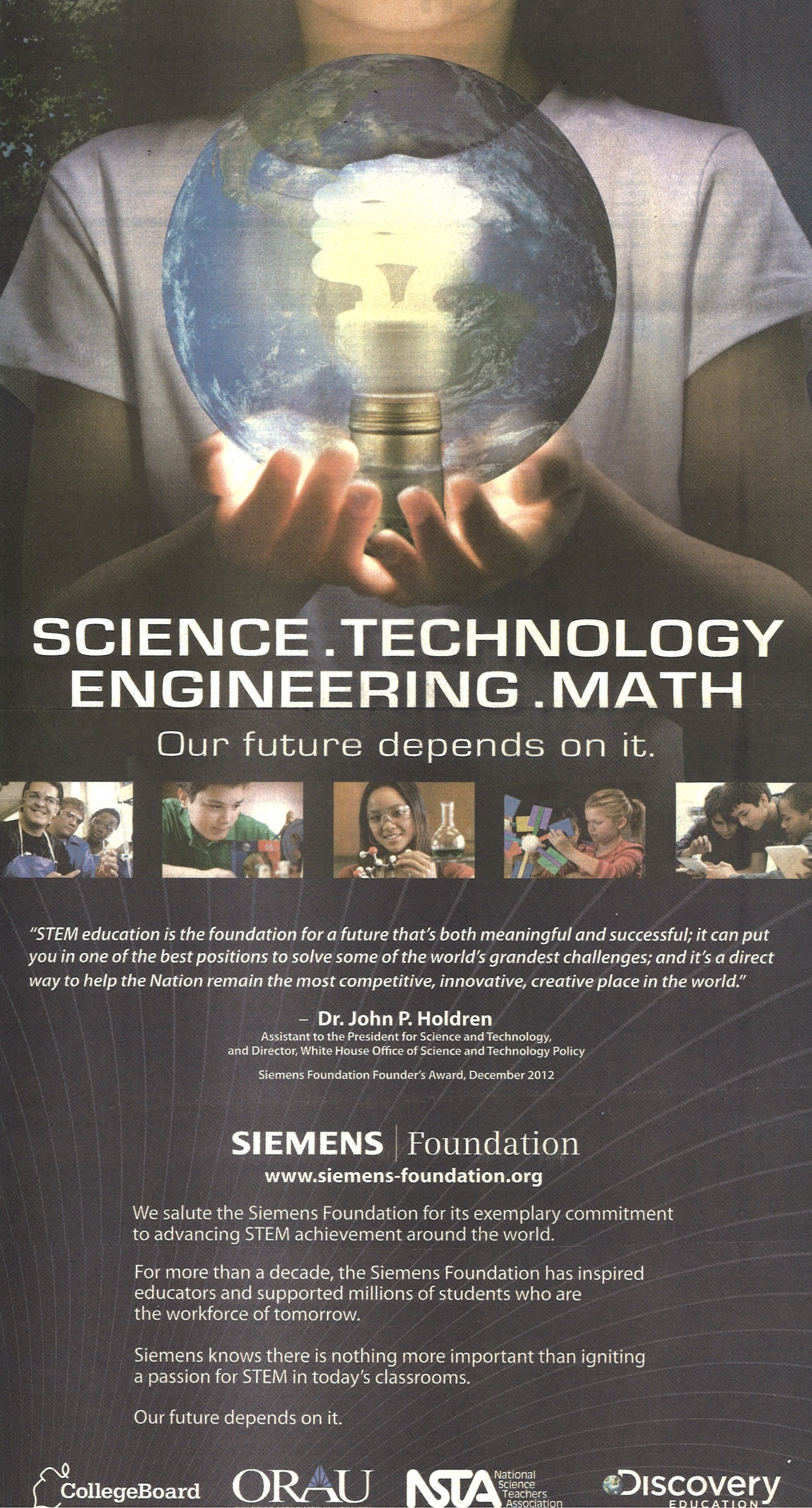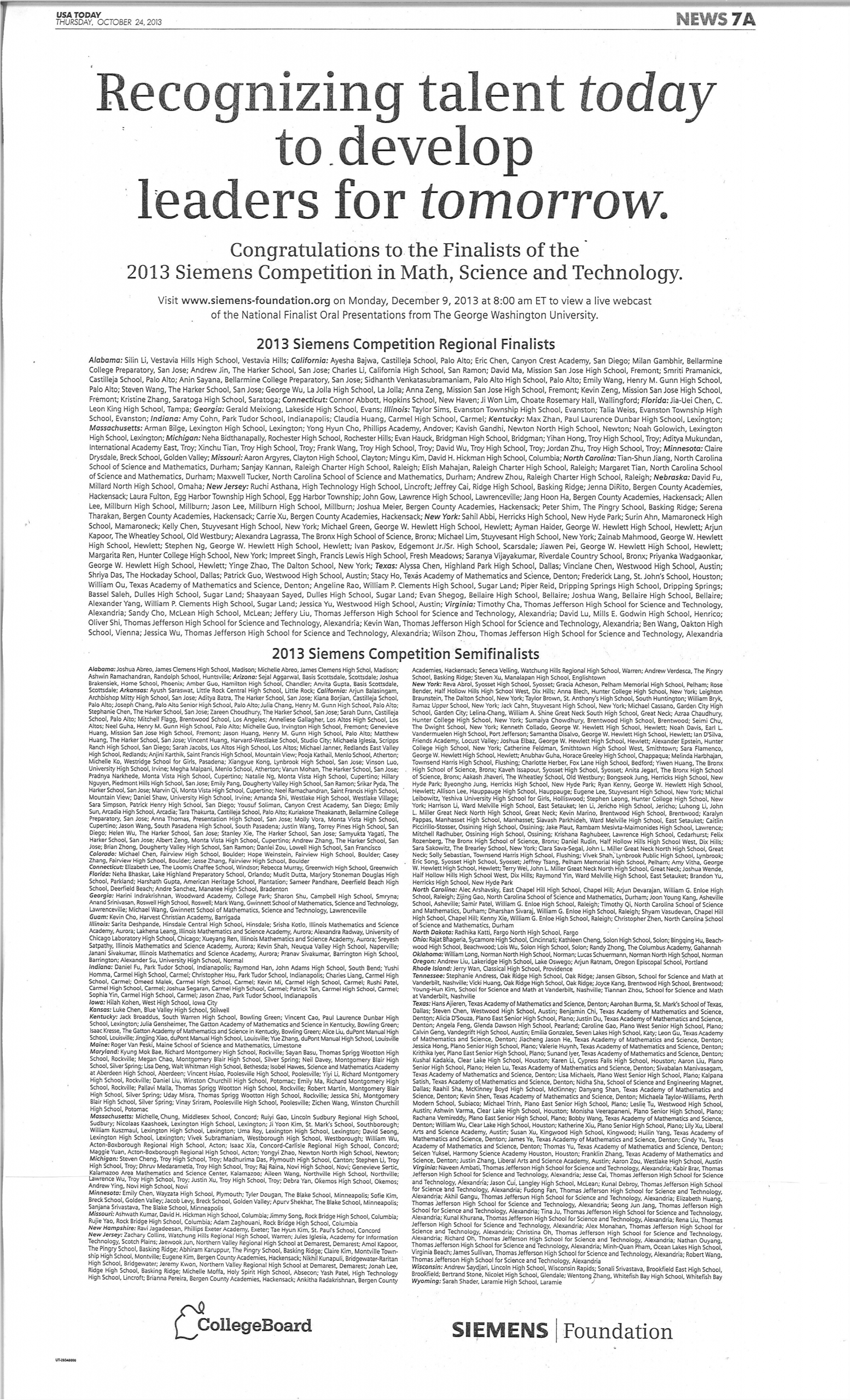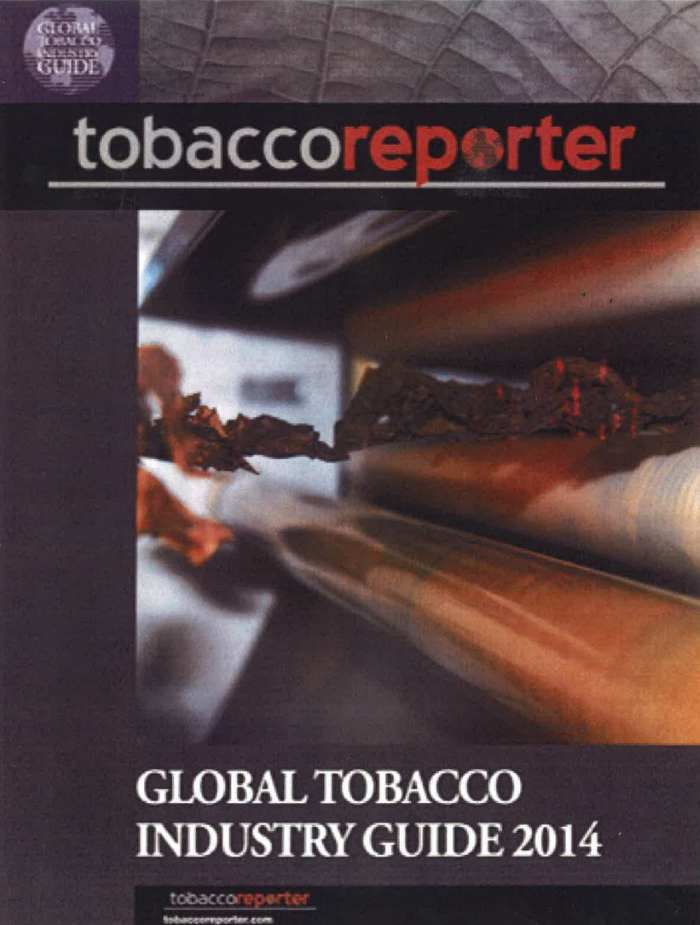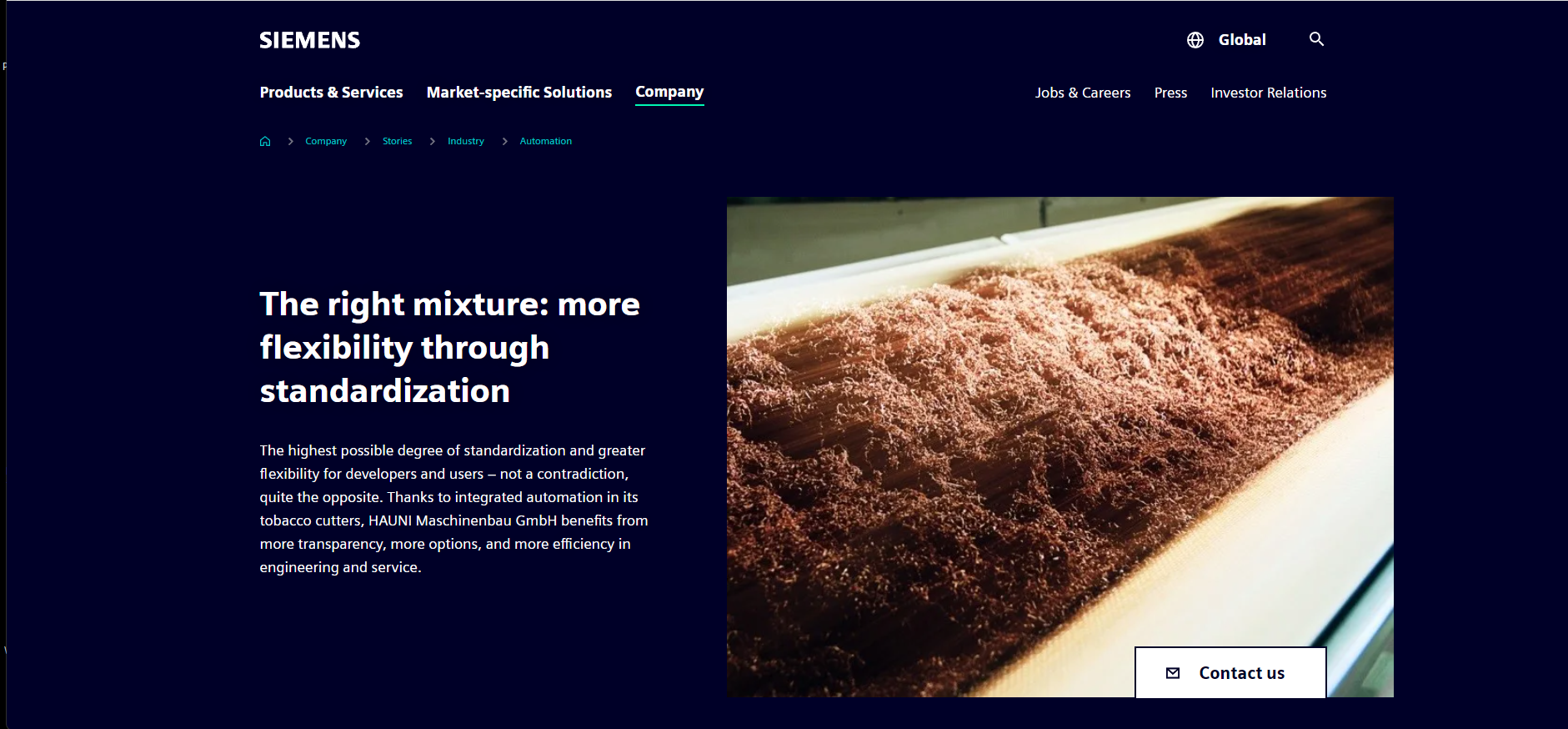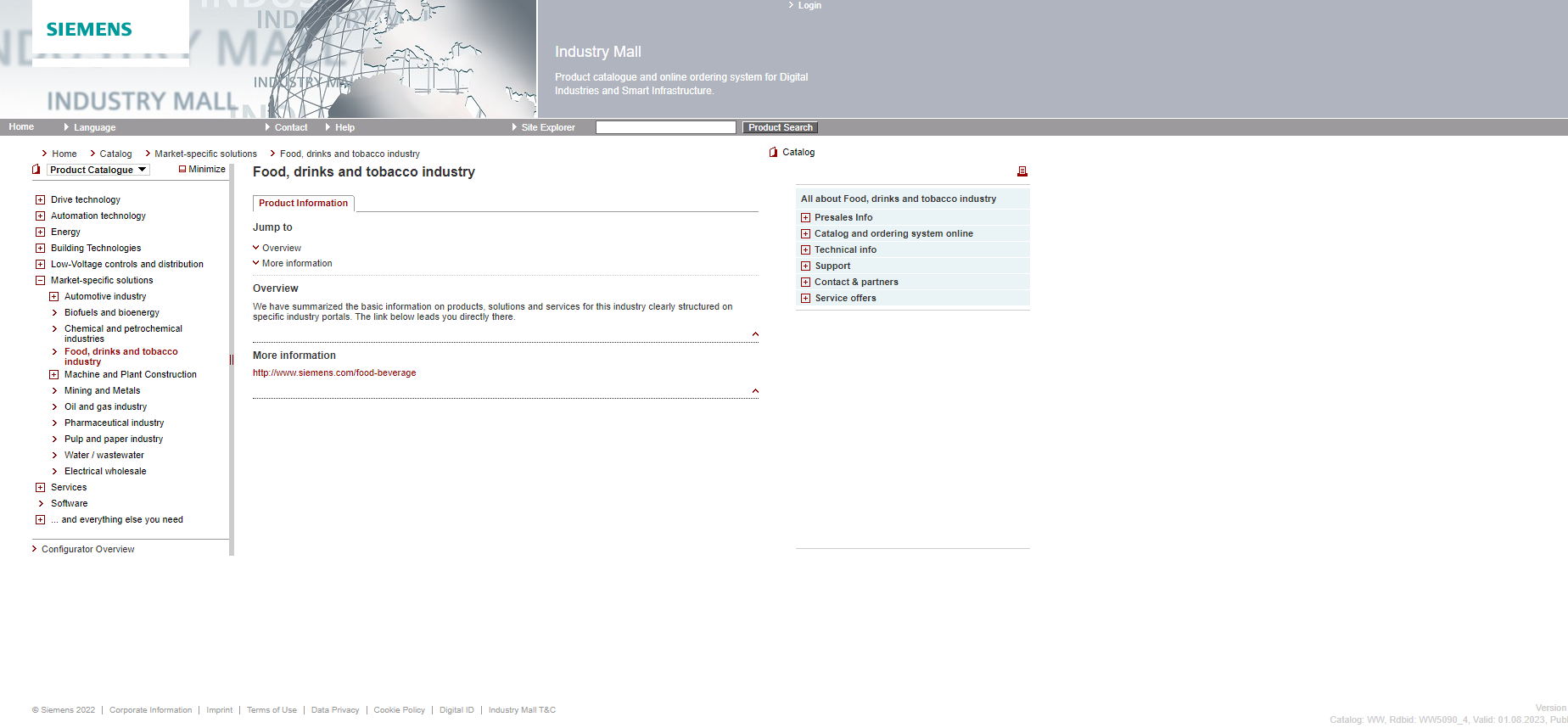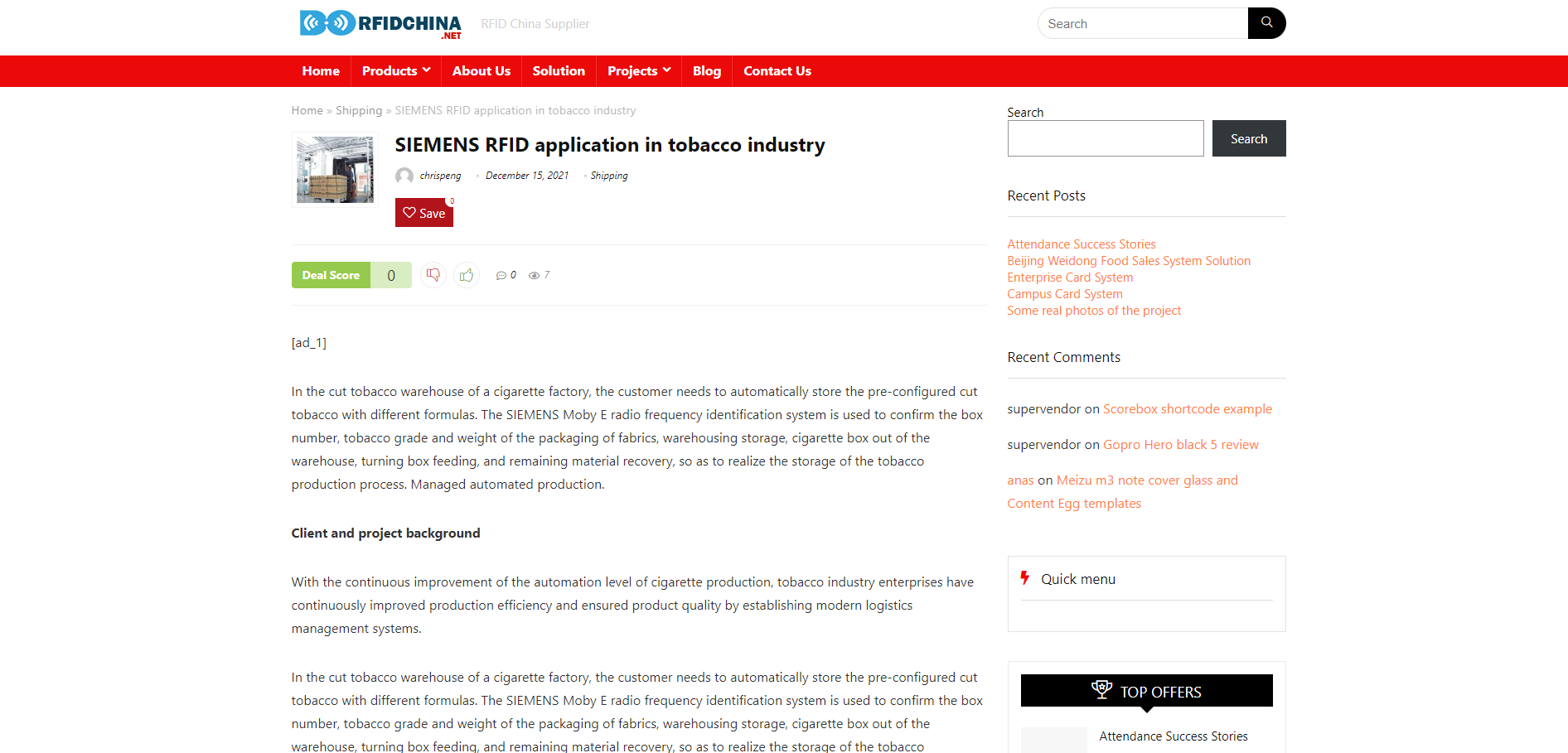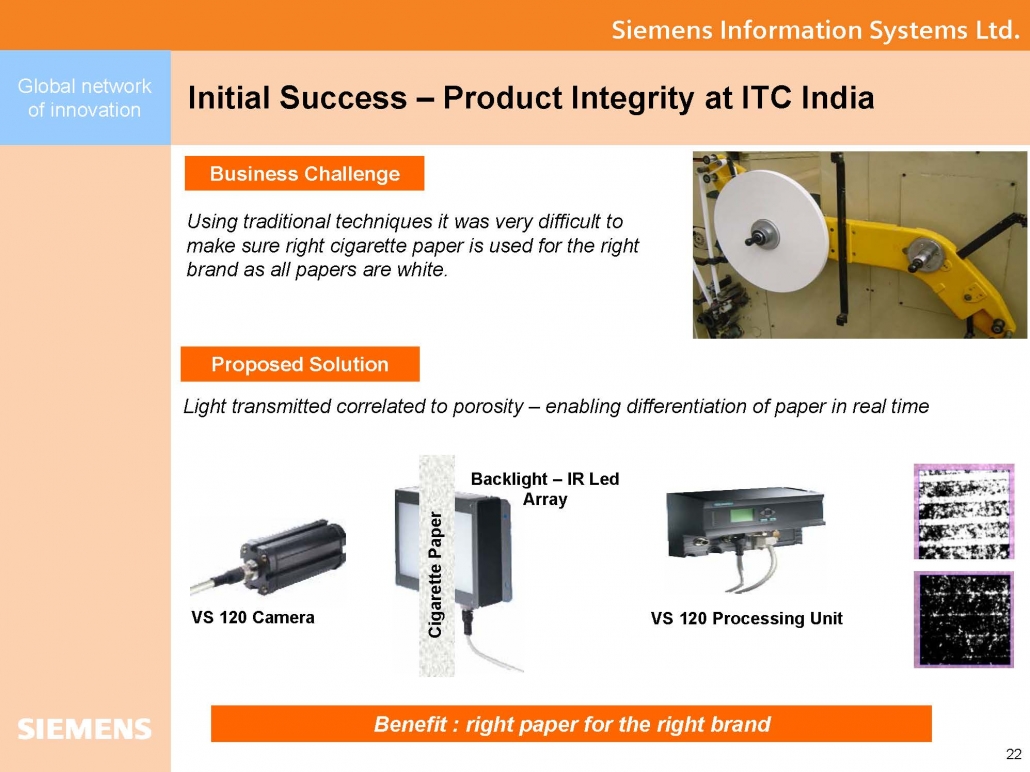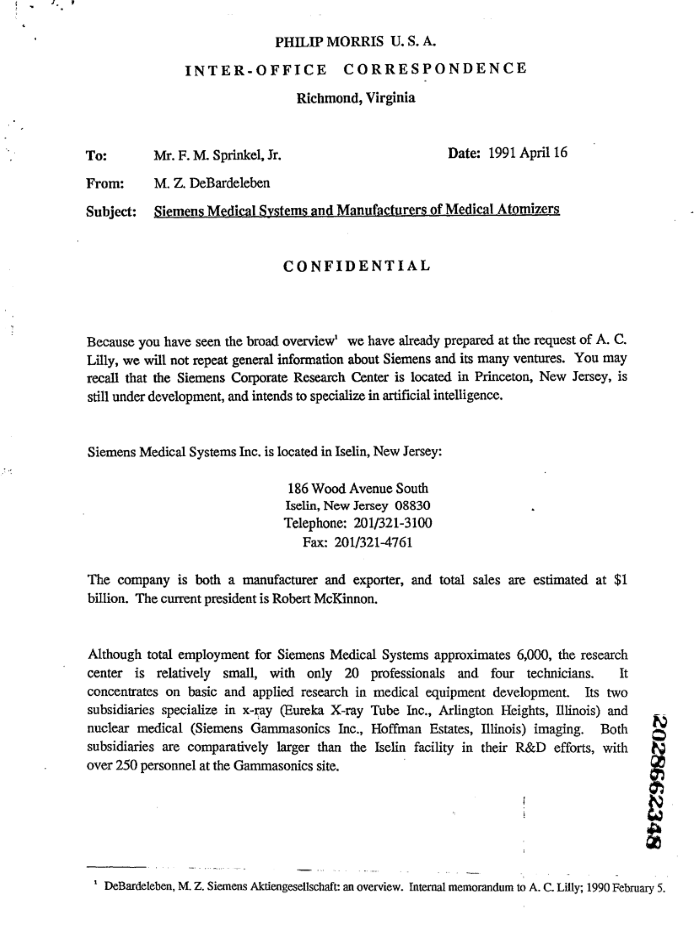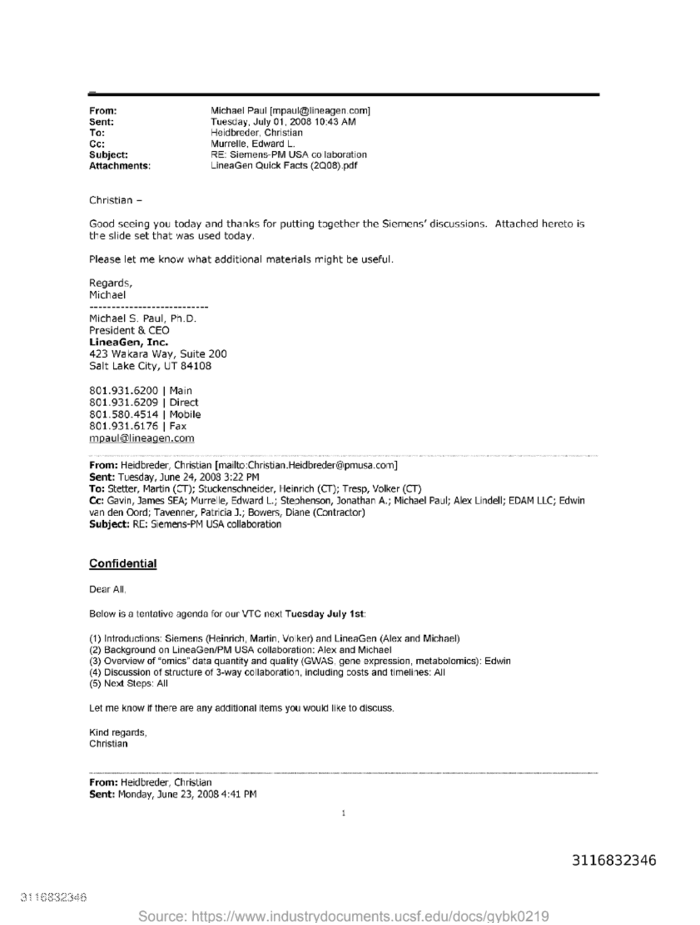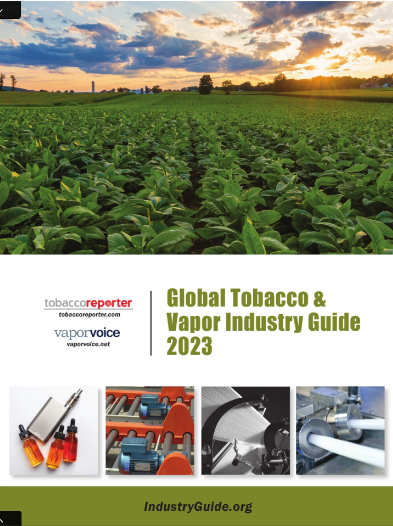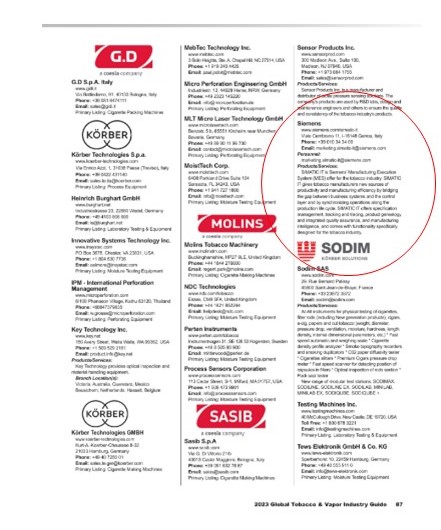Health Care Hypocrites, Part I
SIEMENS
The global technology company that makes MRIs and other advanced health care equipment…while providing the tobacco industry with new sources of productivity and cigarette manufacturing efficiency
In proposing and implementing tobacco control policies, it is essential to identify potential barriers inherent in the network of supporting industries and services connected to cigarette production. These include agricultural chemical and equipment suppliers; manufacturers of cigarette-making machinery, producers of paper, ink, flavoring agents, filters, and packaging; shipping companies; investment firms and banks; advertising agencies and public relations firms; and supermarket, drugstore, and convenience store chains that still sell cigarettes. Many of these companies in turn also do business with health care institutions.
For more than four decades, the author has called attention to health-related allies of cigarette manufacturers with the aim of weakening or ending such ties. Sometimes this is accomplished in the form of shareholder advocacy. In the 1980s, 3M, the manufacturer of stethoscopes, asthma medications, and surgical supplies, also helped promote cigarettes through its billboard subsidiary, National Advertising. After a decade of pressure by the Interfaith Center for Corporate Responsibility (ICCR) and Doctors Ought to Care (DOC), 3M stopped accepting cigarette ads in 1995. Kimberly-Clark, which makes surgical masks and hospital supplies, was a leading manufacturer of cigarette paper until it divested this division under shareholder pressure by DOC and ICCR in 1994. For more than 25 years, these groups urged CVS to stop selling cigarettes in its 6300 drugstores; it finally did so in 2014 when it rebranded itself as CVS Health and recognized that cigarette sales were inimical to dispensing medications and to the provision of health services in retail clinics run by nurse practitioners in CVS drugstores.
One of the most egregious healthcare hypocrites is SIEMENS AG. A multinational engineering and electronics corporation and Europe’s largest industrial manufacturer, SIEMENS has cultivated an image as a medical equipment and healthcare company in advertisements in major magazines and newspapers with headlines such as “More health care stories with happier endings.” This charm offensive originated in the late 2000s after the company was implicated in the largest international bribery scandal in modern business history. SIEMENS became a sponsor of the arts as well as one of the Stand Up To Cancer fundraising telethon’s “Champions”–a high-level partner. Among the 170-year old German-based company’s divisions is Siemens Healthineers, which produces a broad spectrum of immunoassay, chemistry, hematology, molecular, and urinalysis testing technology for clinical laboratories. The company is also a leader in medical imaging (tied with General Electric for the highest market share [28%], according to The Wall Street Journal in 2015).
But this self-proclaimed healthcare leader is also a leading manufacturer of machines used in cigarette-making. Among SIEMENS’s customers has been Philip Morris USA, maker of the best-selling cigarette brand Marlboro. According to SIEMENS’s website in 2015, the company’s tobacco industry division includes “machines for the manufacturing and packaging of cigarettes at speeds of 4,000 to 20,000 cigarettes per minute,” and its “Simotion Motion Control System is now gaining a foothold in the cigarette manufacturing industry.” A single SIEMENS machine thus produces 1.2 million cigarettes (or 60,000 packs) during the annual one-hour Stand Up To Cancer telecast.
This exhibition includes screenshots of the SIEMENS website in 2007, 2014, 2015, 2021, and 2023 that showcase its work for RJ Reynolds, British American Tobacco, Japan Tobacco, Imperial Tobacco Company of India, and the China tobacco monopoly. Today SIEMENS’ streamlined public-facing website gives no obvious clue that the company is still an ally of cigarette manufacturers.
It cannot go unmentioned that SIEMENS was also Germany’s leading industrial conglomerate throughout the Nazi era and made use of hundreds of thousands of slave laborers, including in factories inside concentration camps.
Alan Blum, MD
Director, The Center for the Study of Tobacco and Society
Curator, “Healthcare Hypocrites, Part I: SIEMENS”

